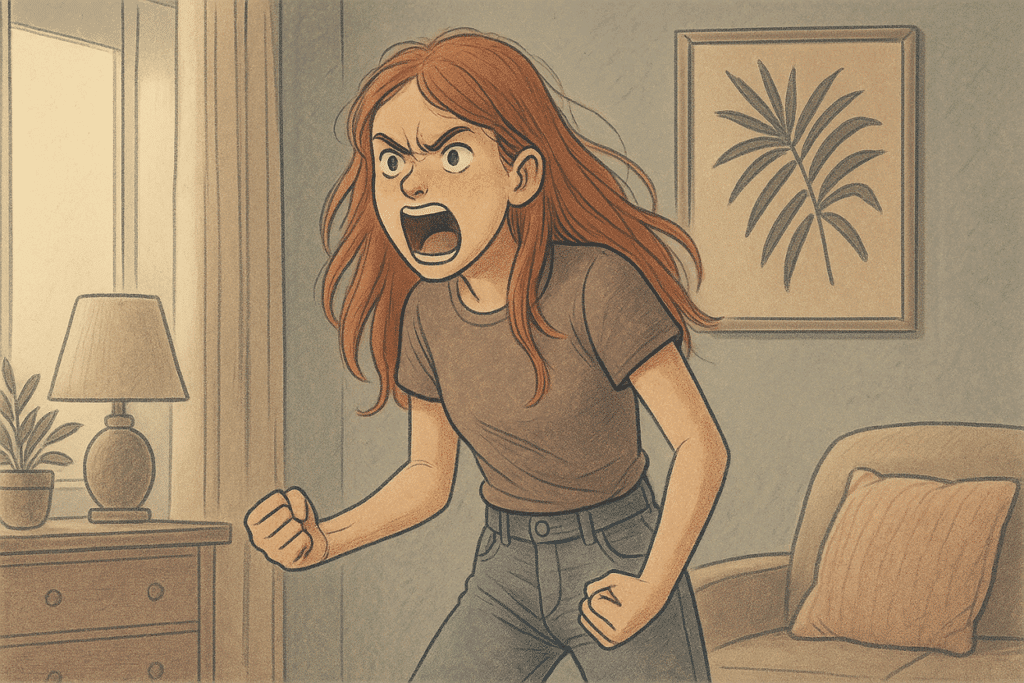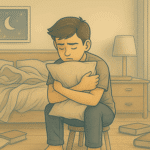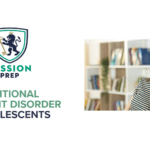Key Takeaways
- Approximately 40% of teens struggle with anger issues, which are distinct from normal teenage mood swings when they become destructive or persistent
- Physical symptoms of teen anger include increased heart rate, clenched fists, and tension headaches that you should recognize as warning signs
- Adolescent brain development, hormonal changes, academic pressure, and underlying mental health conditions all contribute to anger issues in teens
- Most teens (nearly 70%) can overcome anger issues with proper treatment approaches, including therapy, family support, and appropriate coping skills.
- Mission Prep specializes in comprehensive teen anger treatment using evidence-based approaches, including cognitive behavioral therapy, family therapy, and anger management programs within supportive residential settings that address both symptoms and underlying causes.
Teen Anger Warning Signs
While typical adolescent development includes some emotional volatility, certain patterns indicate that a teen might be struggling with more serious anger issues. These warning signs generally fall into three categories: physical symptoms, behavioral changes, and emotional indicators. By monitoring these areas, you can better determine when your teen might need additional support managing their emotions.
Physical Symptoms
When teens experience intense anger, their bodies often enter a “fight or flight” response, triggering noticeable physical reactions including
- Increased heart rate and rapid breathing during confrontations
- Clenched fists, jaw tightening, and muscle tension
- Flushed face or sweating when upset
- Tension headaches or stomach pain that correlates with emotional distress
- Sleep disturbances, including difficulty falling asleep or staying asleep
- Changes in appetite, either eating significantly more or less when experiencing anger
When these physical symptoms appear frequently, they can take a toll on your overall health and well-being, potentially leading to chronic stress-related conditions if left unaddressed.
Behavioral Changes
Common behavioral changes include verbal aggression, such as yelling, swearing, or making threats.
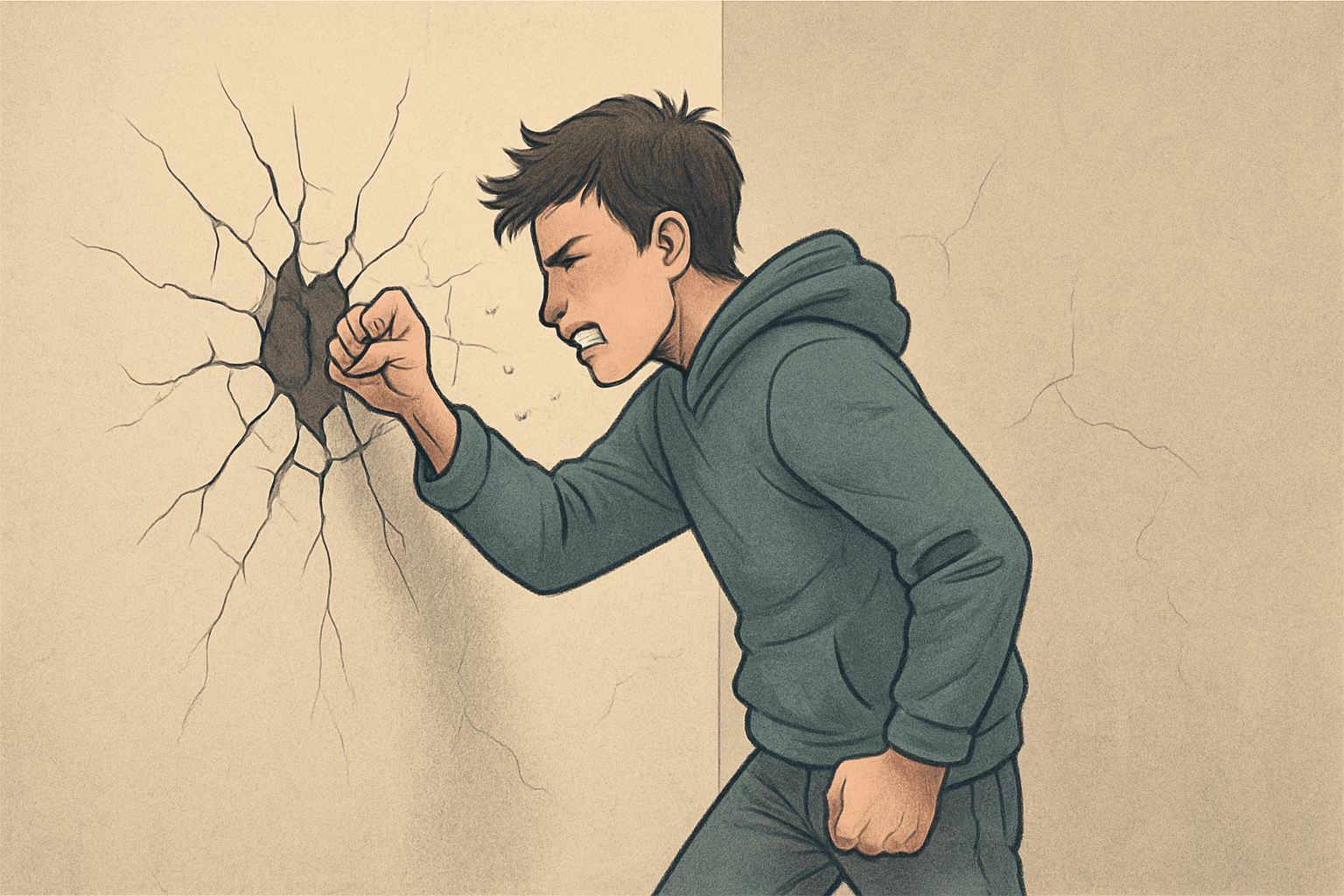
You might find yourself slamming doors, throwing objects, or punching walls during moments of frustration.
Some teens engage in self-destructive behaviors like self-harm or risky activities when angry. Others withdraw completely, refusing to communicate or participate in family activities. Perhaps most concerning is when teens begin to display physical aggression toward others, including siblings, peers, or even parents.
These behavioral manifestations signal that your anger has evolved beyond normal adolescent emotions and requires intervention.
Emotional Indicators
Teens with anger issues frequently experience rapid mood shifts, cycling quickly from calm to intensely angry with little warning. You may express feelings of being misunderstood or unfairly treated by others, contributing to a sense of isolation.
Underneath the anger, many teens harbor feelings of shame, guilt, or embarrassment about their emotional outbursts, creating a cycle where negative self-perception fuels further angry reactions.
| Mission Prep Healthcare: Adolescent Mental Health Care Mission Prep Healthcare specializes in mental health treatment for teens aged 12-17, offering residential and outpatient programs for anxiety, depression, trauma, and mood disorders. Our therapies include CBT, DBT, EMDR, and TMS, tailored to each adolescent’s needs. With a structured, supportive environment, we integrate academic support and family involvement to promote lasting recovery. Our goal is to help teens build resilience and regain confidence in their future. Start your recovery journey with Mission Prep Healthcare today! |
What Causes Teen Anger?
Brain Development
The adolescent brain is still developing. Teenagers’ prefrontal cortex, the area responsible for impulse control, rational decision-making, and emotion regulation, doesn’t fully mature until your mid-20s. This biological reality explains why teens often react emotionally before thinking through consequences.
Meanwhile, the limbic system, which processes emotions, develops earlier and functions at full capacity during adolescence. This developmental mismatch creates a perfect storm where teens experience intense emotions without having fully developed the neurological equipment to manage them effectively.
Hormonal Changes
The surge of hormones during puberty significantly impacts mood regulation and emotional responses. Testosterone increases in both boys and girls during adolescence, potentially contributing to aggressive behaviors when teens lack proper coping mechanisms. Meanwhile, fluctuating estrogen and progesterone levels can intensify emotional reactivity, particularly in female adolescents.
These hormonal shifts create genuine physiological challenges for teenagers trying to maintain emotional balance. While hormones don’t excuse destructive behavior, recognizing their influence helps you approach anger issues with greater understanding.
Stress Factors
Academic pressures can intensify when teens are competing for college admissions or when they’re expected to overachieve. Also, social stressors, particularly the complex dynamics of peer relationships and social media, create additional emotional burdens.
Family tensions, including divorce, financial pressures, or high parental expectations, can further contribute to teen stress levels. Many adolescents lack effective stress management techniques, causing pressure to build until it erupts as anger.
Underlying Mental Health
Anger issues frequently coexist with other mental health conditions that may be undiagnosed or untreated. Depression in teenagers often manifests as irritability rather than sadness, making it easily mistaken for anger problems. Anxiety disorders can trigger fight-or-flight responses that appear as angry outbursts when you feel threatened or overwhelmed.
Other conditions like oppositional defiant disorder, conduct disorder, or bipolar disorder may also underlie persistent anger issues. Our comprehensive assessment process at Mission Prep identifies these potential co-occurring conditions, ensuring that treatment addresses all aspects of your teen’s mental health needs.
When Normal Anger Becomes Problematic
Frequency
The frequency of episodes provides important context for determining if intervention is necessary. Occasional outbursts during particularly stressful periods may fall within normal adolescent development. However, when anger becomes a daily occurrence or the predominant emotional state for you, it indicates a pattern requiring professional attention.
Intensity Measurement
Concerning intensity often involves verbal aggression that exceeds typical teenage complaining, including personal attacks, threats, or extremely disrespectful language.
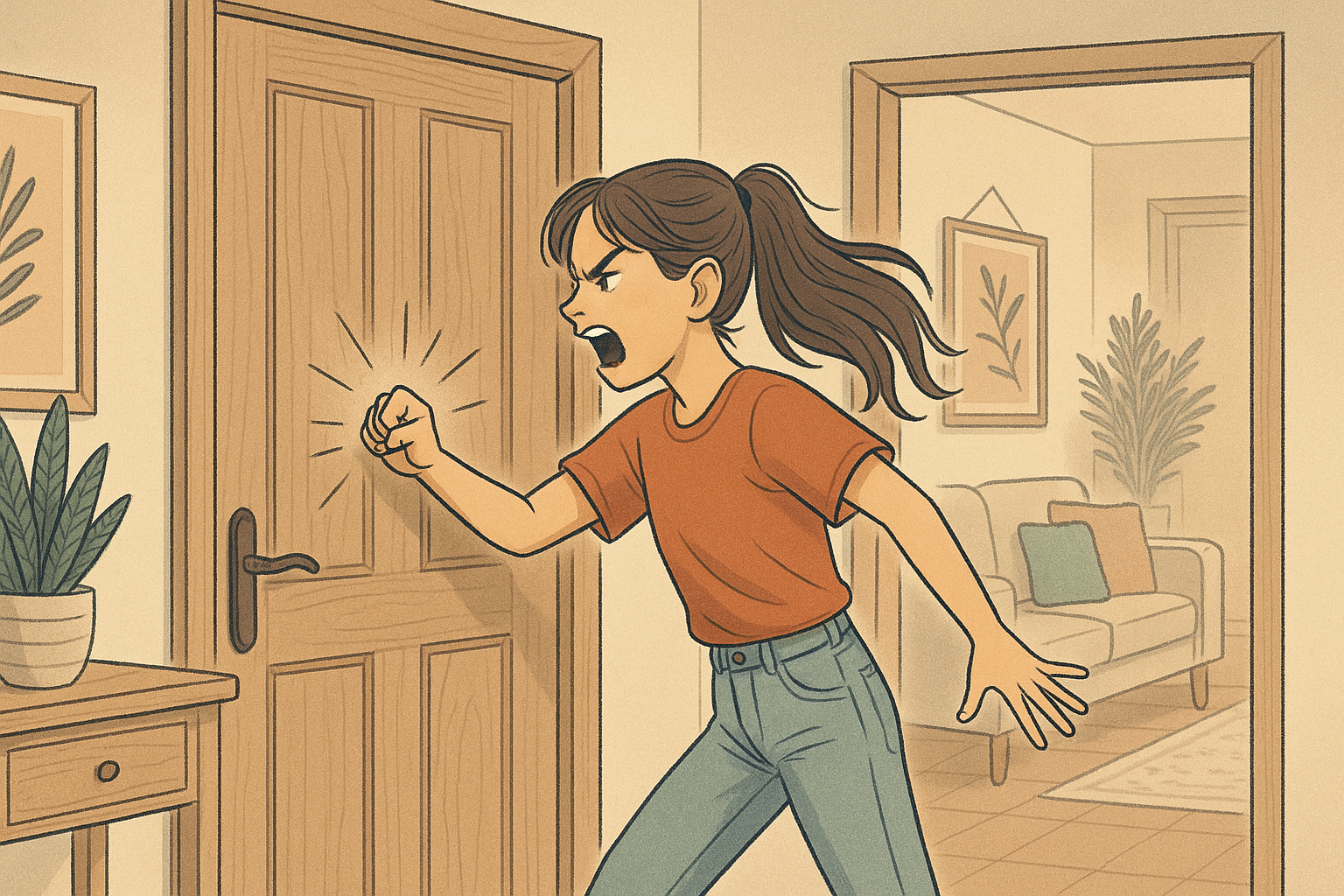
Physical manifestations like self-injury, property destruction, or aggression toward others represent intensity levels that require immediate intervention.
Similarly, physiological responses such as extreme agitation, the inability to calm down without extended cool-down periods, or physical symptoms like vomiting from anger intensity indicate problematic patterns.
Disruption Level
When anger regularly interferes with academic performance, leading to declining grades, disciplinary actions, or school avoidance, it has crossed into problematic territory.
Similarly, significant social consequences, including friendship loss, social isolation, or frequent conflicts with peers, indicate that anger has become disruptive.
Treatment Approaches
1. Cognitive Behavioral Therapy
Cognitive Behavioral Therapy (CBT) stands as one of the most effective evidence-based treatments for teen anger issues. This approach helps adolescents identify the connections between their thoughts, feelings, and behaviors. Through CBT, we teach teens to recognize negative thought patterns that trigger anger and replace them with more balanced perspectives. This cognitive restructuring process helps break the automatic thought cycles that fuel reactions.
CBT also involves practical skill-building components that provide you with concrete techniques for managing emotional responses. These include stress management strategies, communication skills, and problem-solving approaches that reduce reliance on anger as a coping mechanism.
2. Family Therapy
Teen anger issues rarely exist in isolation from family issues. Family therapy brings parents, siblings, and other household members together to address patterns of interaction that may contribute to or result from a teen’s anger problems.

A family therapist creates a safe space where your family members can express concerns, improve communication, and rebuild trust that may have been damaged through exchanges.
This collaborative approach ensures that the home environment supports the teen’s progress in managing anger more effectively. Family involvement significantly increases the likelihood of lasting positive changes in teen behavior.
3. Anger Management Classes
Structured anger management programs provide teens with systematic education about anger and specific techniques for controlling emotional responses. These classes often use a group format, allowing teens to learn from peers facing similar challenges while reducing the sense of isolation many angry teens experience.
The group setting creates opportunities for role-playing difficult situations and receiving feedback from both peers and trained facilitators.
4. Medication Options
While medication is not typically the first-line treatment for anger issues, it may be appropriate in certain situations, particularly when anger co-occurs with other mental health conditions.
If your anger is related to underlying depression, anxiety, ADHD, or mood disorders, medication may help address these conditions, indirectly improving anger management.
Teen Coping Skills for Anger
1. Breathing Exercises
Simple breathing techniques provide powerful tools for managing anger in the moment. Specific patterns like box breathing (inhaling for four counts, holding for four, exhaling for four, holding for four) and diaphragmatic breathing (deep belly breathing) activate the parasympathetic nervous system, counteracting the physiological stress response.
These techniques can be practiced anywhere without drawing attention, making them particularly useful in school settings or social situations where teens might feel embarrassed about using more visible coping strategies.
2. Physical Outlets
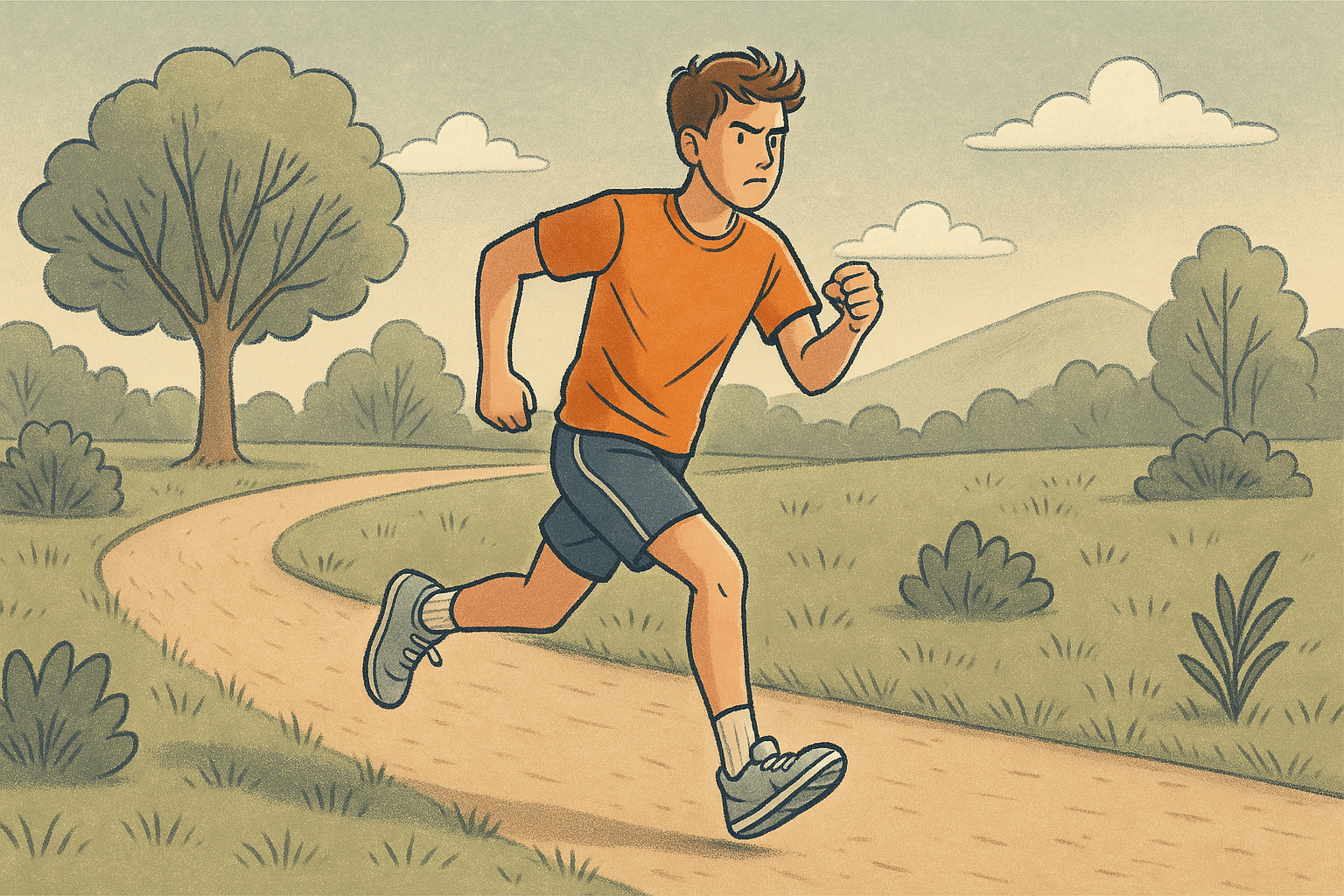
Physical activity is an effective channel for releasing the energy that often accompanies anger.
Identify enjoyable physical outlets that match your interests and abilities. Activities might include organized sports, running, swimming, martial arts, dance, or even vigorous household chores when other options aren’t available.
The physical expression of emotion through safe channels prevents the buildup of tension that often leads to explosive outbursts.
3. Thought Restructuring
Many outbursts begin with distorted thought patterns that intensify emotional reactions. Identify and challenge these cognitive distortions, such as catastrophizing (“Everything’s ruined!”), mind-reading (“They did that just to make me mad”), or all-or-nothing thinking (“No one ever listens to me”).
By recognizing these patterns and replacing them with more balanced thoughts, you can prevent the escalation from minor frustrations to major anger episodes.
Finding Professional Help
Knowing when to seek professional help can be challenging. While some degree of emotional volatility is normal during adolescence, certain warning signs indicate the need for intervention.
Consider seeking professional help when your anger is frequent (occurring multiple times per week), intense (involving threats, property damage, or physical aggression), or significantly disrupting your functioning at school, with peers, or at home.
Mission Prep’s Path Forward: Transforming Teen Anger Into Emotional Strength
At Mission Prep, we recognize that teen anger treatment requires more than anger management techniques; it demands a comprehensive understanding of each adolescent’s unique biological, psychological, and environmental factors.

Our residential treatment programs combine Cognitive Behavioral Therapy, Dialectical Behavior Therapy, and somatic experiencing within a structured, supportive environment that provides 24-hour professional care.
Through comprehensive psychological evaluations and individualized treatment planning, we address co-occurring mental health conditions while teaching practical coping skills, healthy communication techniques, and emotion regulation strategies.
Our family-centered approach ensures that parents develop the tools needed to support your progress at home, creating lasting change that extends beyond our program. When your anger is disrupting your potential and your family’s well-being, professional intervention can transform destructive patterns into emotional resilience and stronger relationships.
Frequently Asked Questions (FAQ)
Is teen anger just a phase?
While some degree of emotional volatility is normal during adolescence, persistent, intense anger that significantly disrupts functioning is not simply a phase that teens will outgrow without support. When anger consistently interferes with relationships, academic performance, or family functioning, it indicates a need for intervention rather than a normal developmental stage.
Can diet affect teen anger issues?
Nutrition can influence mood regulation and emotional stability in teenagers. Research suggests that diets high in processed foods, sugar, and caffeine may exacerbate mood swings and irritability in some adolescents. Nutritional deficiencies, particularly in omega-3 fatty acids, B vitamins, magnesium, and zinc, have been associated with mood dysregulation.
Are anger issues hereditary?
Anger regulation has both genetic and environmental components. Research suggests that temperamental traits related to emotional reactivity have a hereditary component, with some teens naturally experiencing emotions more intensely or having lower frustration tolerance.
How does Mission Prep’s approach to teen anger treatment differ from traditional therapy?
Mission Prep utilizes a comprehensive, individualized approach beyond that of traditional anger management techniques. We employ the biopsychosocial model to examine how biological, psychological, and environmental factors contribute to each teen’s anger patterns. Our treatment combines evidence-based therapies, including cognitive behavioral therapy (CBT), dialectical behavior therapy (DBT), and somatic experiencing within structured residential settings.


